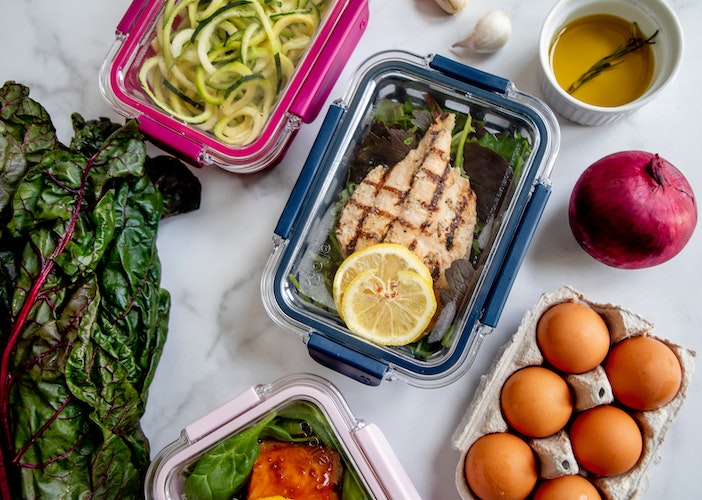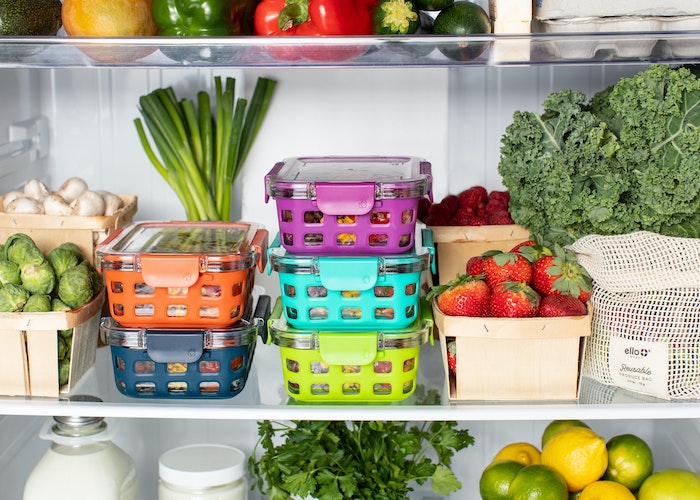3 Steps For Auditing Your Grocery Spending In 7 Minutes (& Save Hundreds)

It’s summer and if you’re anything like me, chances are you’re hoarding fresh fruits, splurging on lakeside and ocean-front AirBnBs every weekend, and grilling. With so much sun and ripe vegetables, your grocery bill is probably getting a bit out of hand. Well, enter the grocery audit! With just a quick five to ten minutes, you can get on top of your grocery spending, whether it’s for the week, the month, or the season.
First, assemble and file your grocery receipts. Using your receipts, categorize your spending in the last 30 days. Is the bulk of your spending going towards organic produce, which can be pricier? Or are you a little over-addicted to coconut water? Either per week or per month, tally up how much money you’re spending on categories like meat and poultry (if this applies), vegetables, snacks, dairy, etc. While it can be tempting to beat yourself up for buying a few extra bottles of wine, for instance, this exercise isn’t meant to feel like self-sabotage: it’s simply to get a sense of where and how your money is being spent.
Next, reflect on your household’s dietary needs. Now, think about how many members are in your household and what types of dietary restrictions they have. If you live alone this is easy but if you’re living in a shared space with roommates or family members, keeping track of how many mouths you’re feeding (and any dietary restrictions you’re accounting for with your grocery bill) can explain any pricey purchases. For instance, if your spouse or partner has a nut-allergy, is gluten-free, lactose-intolerant, etc., buying certain items are non-negotiable expenses you probably can’t skimp on. If, on the other hand, you’re experimenting with veganism and are naively splurging on overpriced vegan brands, maybe it’s time to start considering some popular, affordable vegan swaps.
Finally, what’s in your fridge, cupboards and pantry? Since you’ve taken the time to determine where your grocery spending is going and which expenses are mandatory or not, depending on your family’s dietary situation, now go through your pantry to see what staples you have and are simply not using or which items you’ve perhaps over-purchased 2-3 times. Maybe you keep thinking you’ve forgotten to buy pasta sauce but you actually have 5 bottles at home–so make a note of that! Or perhaps you bought chickpeas in bulk and haven’t used them in a while but can lower your upcoming grocery bill by making a meal with canned items.
Now that you’ve done a quick audit of your household, past grocery bill(s), and your supplies, jot down a few ideas for how you can cut down on spending. Whether it’s switching to a generic brand for a few weeks, creating recipes that utilize existing items in your pantry, or flagging your overspending on indulgences (chocolate and wine, anyone?), there’s always something you can do to reduce your grocery bill. And, if you can’t think of any ideas, start looking for coupons for your major supermarket and taking advantage of deals you find. That way, you can stock up on pantry staples at a discount or switch to a brand of yogurt that’s on sale for the month of August.
Once you get into the habit of hunting for savings, the opportunities really start to add up. Many well-known brands offer digital coupons or special promotions through their websites and newsletters, so it’s worth signing up to keep an eye on these deals. You can combine these with supermarket offers or cashback apps for maximum benefit. Don’t forget to search online for discount codes before you check out—sometimes a simple code can knock a few bucks off your favorite products. From organic cereals to premium coffee, a little research can help you enjoy high-quality brands without paying full price. Over time, these small savings stack up, making your grocery trips significantly lighter on the wallet.
So in short:
- Count your household and consider varying dietary needs (1 min)
- Organize your receipt(s) in the past 30 days (consider an easy scanning app like Receipt Scanner or Bill) (3 mins)
- Consider what can go and keep what can’t (3 mins)
Remember, while auditing your actual spending is pretty swift, you may need to dedicate more time for an initial, deep inventory dive into your fridge, pantry and cupboards’ stock.
Auditing your groceries may sound intimidating but it’s actually a simple, easy-to-do task that exercises your creativity in coming up with fun ways to save money on a recurring expense! That being said, between you and I’ll still be spending a little too much this summer on farm fruit.
Keertana Anandraj is a recent college grad living in San Francisco. When she isn’t conducting international macroeconomic research at her day job, you can find her in the spin room or planning her next adventure.
This article originally appeared in our TFD Newsletter. For more exclusives, sign up for our free weekly newsletter here.
Image via Unsplash




